Happy Saturday! Apologies for the day delay! Please note there won’t be a newsletter next week, so look out for the next one on March 18th.
Today’s Edition:
TikTok expands the length of video uploads
LinkedIn previews new post analytics
Twitter works on a Podcasts tab
TikTok Expands Video Uploads To 10 Minutes
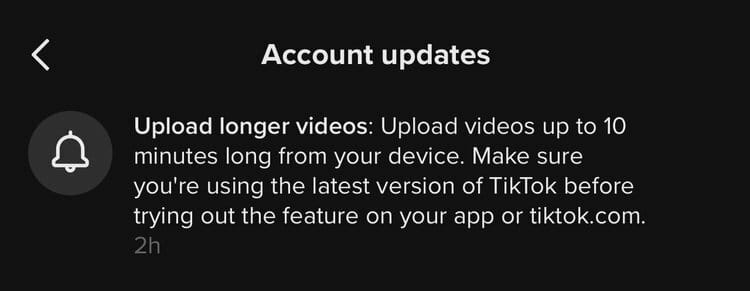
Earlier this week, TikTok announced it was expanding the length of video uploads. The update shouldn't come as much of a surprise as the short-form video platform has been steadily increasing the video upload lengths, moving from 15 seconds to 60 seconds to 3 minutes. With the latest update, TikTok is tripling video upload lengths, giving creators the ability to share videos as long as 10 minutes.
Over the coming weeks, creators who are on the latest version of TikTok's app will receive a notification when they have access to the extended video uploads.
More Flexibility & Time For Creators
By extending the video length, creators have more flexibility and time to share longer-form videos, such as tutorials, instructional content, and vlogs, similar to what can be done on YouTube today. This type of content can be quite lengthy, depending on the specific topic. Instead of having to create multiple parts and direct their viewers to specific videos to follow along, creators now can share this type of content in a more streamlined and easier-to-access way.
Due to this, creators can now share longer-form content directly on TikTok, instead of going to YouTube or somewhere else for that kind of content. Creators can leverage their existing audiences and TikTok's audience growth opportunities rather than having to start over on another platform.
This has already been happening since 2020 with many of TikTok's biggest stars launching YouTube channels or investing more in them after gaining fame from the short-form video app. Creators not only see YouTube as a way to diversify their content strategy, but also as an option to monetize through YouTube's revenue share program.
There Likely Is An Advertising Tie-In
TikTok is positioning this update as a way for creators to create longer, entertaining videos, but there's likely a bigger advertising tie-in. YouTube, which generated $30 billion in advertising revenue last year, has demonstrated that ads on long-form videos can be lucrative for a social media platform as well as its creators.
Although Facebook is attempting to break through with its recent launch of the banner and sticker ads for Facebook Reels, convincing advertisers of the value of advertisements on short-form video has proved to be difficult.
TikTok's move into longer videos may be in and of itself a solution to grow its advertising business. With longer videos, TikTok is now able to offer advertisers a new advertising format, such as pre-roll or mid-roll ads, taking advantage of the platform's vibrant community.
This also opens up the opportunity for TikTok to do an advertising revenue share, similar to YouTube's Partner Program, where creators earn 55% of advertising revenue when enabling ads on their videos.
TikTok has faced a great deal of backlash for its current monetization options to date, which mostly revolve around brand partnerships and the TikTok Creator Fund. Giving the creators the ability to monetize through advertisements on their videos could help get TikTok back in the good graces of creators.
The Impact of Longer Video Uploads
As of right now, it is too early to determine the impact of longer video uploads or even the adoption of longer video uploads by creators. What is particularly interesting about this move is that it’s somewhat the opposite of what other social media platforms are doing.
YouTube, Facebook, and Instagram are all investing heavily in their respective short-form videos. YouTube will continue to be centered on long-form video, but it has confirmed that Shorts will become a significant part of the platform with new monetization options and tools slated for release. Meta has taken similar steps with its Reels formats on Facebook and Instagram. Instagram recently closed down its standalone IGTV app as well.
Due to TikTok's popularity, all social platforms are moving towards shorter, snackable content, but TikTok is now encouraging longer videos. The move to longer videos goes against the nature of TikTok, which is geared toward quick, short-form, and entertaining videos. The popularity of TikTok has been a key factor in increasing the preference of creators and consumers for short-form video. It won't be impossible for TikTok to get users accustomed to longer videos, but it will be a challenge due to short attention spans.
If longer videos are embraced by the TikTok community as a whole, it will be a win for TikTok and its creators. TikTok can drive platform engagement and increase its advertising business, and creators can use TikTok to express themselves in a new way and monetize their content.
Industry News
Instagram announced auto-generated captions for in-feed videos. Whenever creators share videos to their feed, the videos will automatically have captions enabled. Alternatively, creators can disable auto-generated captions in their advanced settings and toggle them on for individual posts. At launch, the feature is available in more than 17 languages, including English, Spanish, Arabic, Portuguese, and Japanese.
Auto-generated captions continue Instagram's mission to make its app more accessible for different communities. In addition to enhancing the experience of those in the deaf/hard-of-hearing communities, auto-generated captions give viewers the ability to enjoy video content while in sound-off environments.
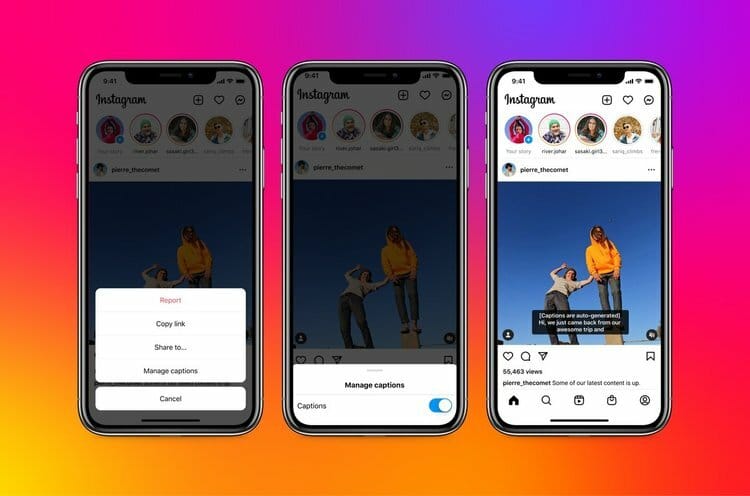
TikTok launched an Agency Center tab to support a new program for livestreaming creators. As part of the tab is the option to allow creators to be discovered and invited by agencies to develop and coach their growth using the platform's live streaming, such as tips and tricks and best practices.
TikTok’s new program and corresponding feature is part of its efforts to attract creators by providing them with opportunities to grow and expand, specifically in the live video format. With steady product development and a dedicated livestreaming team, TikTok LIVE is on track to be an important component of the platform.

LinkedIn previewed upcoming post analytics. LinkedIn's Chief Product Officer, Tomer Cohen, announced that creators will soon have access to new analytics on individual posts and overall performance across content and audience. Creators, for example, will be able to see how their content is performing with viewers who have certain job titles and the industries they are in.
LinkedIn's analytics offerings are quite limited at this time, so any improvements are likely to be welcomed. With these new analytics, creators will be able to better identify and understand how their content is resonating with different types of audiences. As a result, creators will be able to identify new strategies and optimizations to improve their performance, especially with certain audiences they hope to reach.
As influencer marketing becomes more popular on LinkedIn, these analytics will also prove useful to marketers since they will provide better insight into the value of their collaborations with creators. This will be especially helpful when it comes to measuring whether their content is reaching their targeted audience, such as particular job titles or industries.
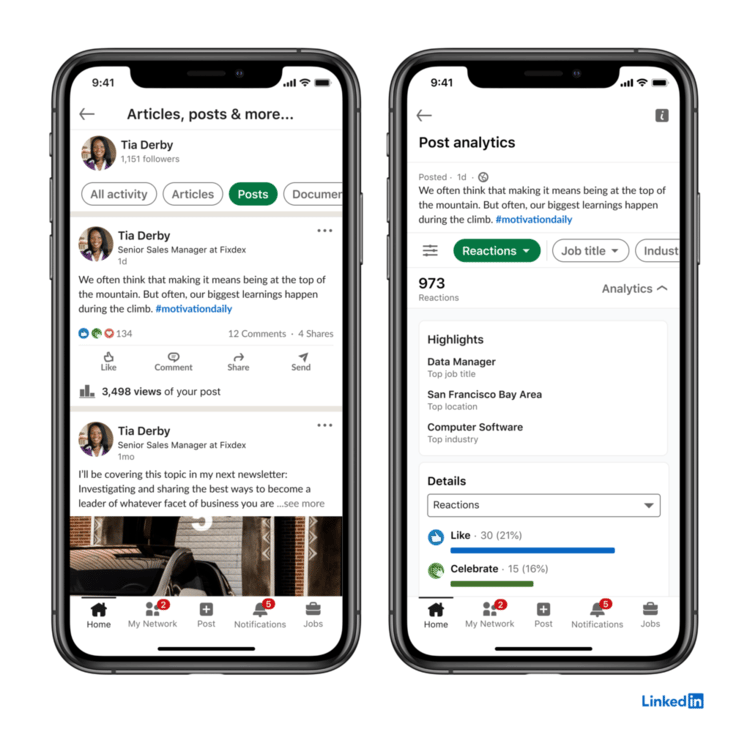
Twitter is working on a Podcasts tab. Code discovered by Alessandro Paluzzi in the Twitter app reveals the platform is currently developing a dedicated podcast tab in the sidebar.
Twitter confirmed it is always testing new ways to "help people engage in conversations on Twitter," but did not share specifics regarding podcast support. Although, with other social media platforms like Facebook and LinkedIn entering the podcasting world and the overall growth of the industry, it seems almost inevitable.
The big question is whether Twitter will integrate with other third-party platforms so podcasters can link out to their podcasts across Spotify, Apple Podcasts, and others or if the platform will launch its own podcasting tool. No matter what direction it takes, podcasts are yet another way the platform can attract content creators, similar to the integration and acquisition of newsletter platform, Revue.
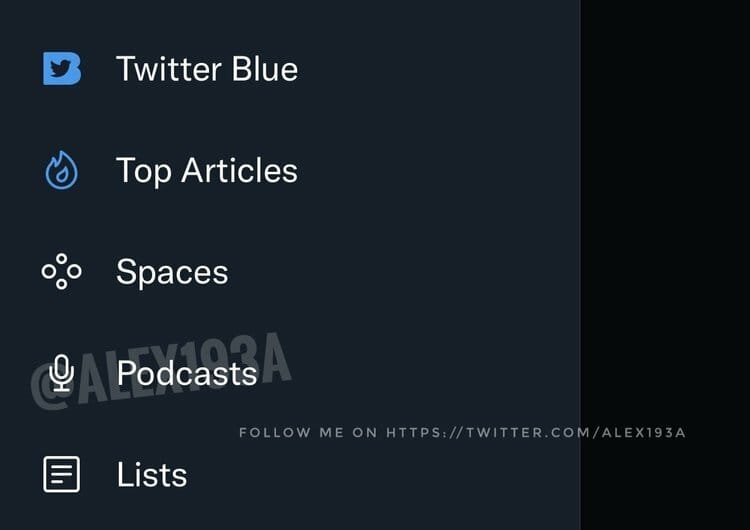
Reddit rolled out a new Discover tab. With the new tab, the platform surfaces communities it thinks users will enjoy based on the communities they are already part of and engaging with. Users can filter the Discover feed to find specific topics to discover new content and communities. Furthermore, users can provide feedback to improve their feed over time by selecting options such as Show Me More Of This Content, Show Me Less Of This Content, and Hide That Content. This update also includes Community Drawers, which allow users to access communities and custom feeds quickly, as well as Profile Drawers, where users can update and customize their profiles easily.
This marks the first time in over two years that Reddit has made a significant update to its overall interface. It’s the latest step towards incorporating the functionality of other social media platforms into Reddit. With the Discover tab, the platform puts a greater focus on personalization with images and videos at its core.
Social media platforms have established personalized feeds as a standard feature as users want easy access to relevant content Reddit adopting this practice increases the chances that new and everyday users will be able to easily find the content they care about most with little to no effort, which can drive up platform usage and engagement.
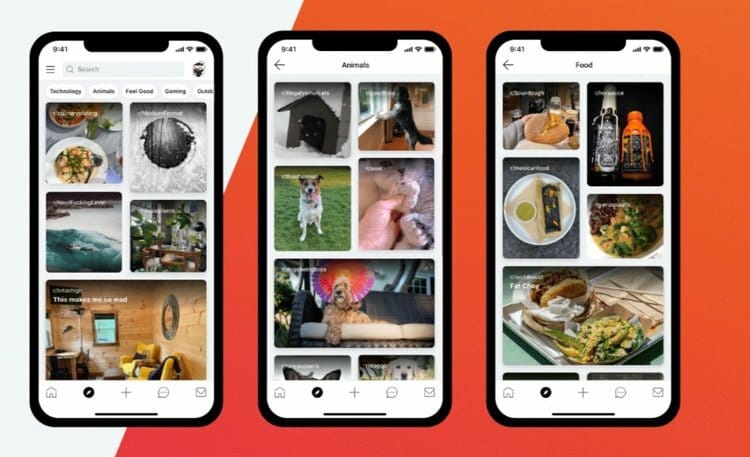
Clubhouse introduced an in-room chat feature. As part of its latest app update, the social audio platform is enabling users to communicate via text during live rooms. Creators have full control over the chat feature, such as the ability to enable or disable the chat for specific rooms, and the ability to delete messages with typos. The number of messages sent in a chat will also be displayed next to a new chat icon.
The feature gives creators and their audiences another way to interact and engage with each other in real-time. This feature feels long overdue since many moderators and attendees already use Discord, Slack, and Twitter for this purpose. This feature now enables this behavior to occur directly in-app, removing the need for third-party platforms.
Creators and their brand partners can also use chat messages as another metric to consider when elevating the performance of sponsored rooms.

Chart Of The Week:
Branding At The End Of A TikTok Video Leads To A 17% Point Decrease In Brand Linkage
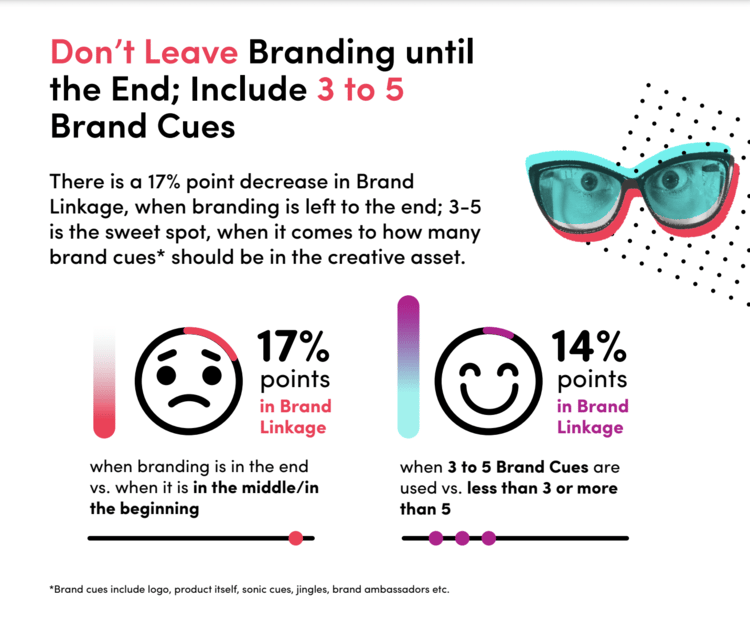
TikTok For Business and IPSOS' new Brand Lift Studies report includes data showing that branding (e.g. logo, product, sonic cues, etc.) is most effective when it occurs at the beginning or middle of a video as opposed to at the end. A decrease of 17% points in Brand Linkage results from the latter.
The report also showed that when 3-5 Brand Cues are used instead of fewer than 3 or more than 5, there is a 14% percent increase in Brand Linkage.
Why is this data useful to marketers? To maximize Brand Linkage and the overall effectiveness of content, they can build their branded content and influencer marketing campaign briefs to reflect these learnings. Examples are instructing creators to place relevant branding at the beginning or in the middle of videos and to keep brand cues in the 3 - 5 range.
What I’m Reading
Beauty influencers are getting into NFTs and the metaverse (Glossy)
Qianna Smith Bruneteau wants to destigmatize influencing (Marketing Brew)
Denny's refreshes 24/7 heritage with help of diverse TikTok stars (Marketing Dive)
‘Set me up for life’: Female college athletes stash NIL cash (Oregon Live)
How OnlyFans is courting designers and bringing more fashion talent to the platform (Glossy)
